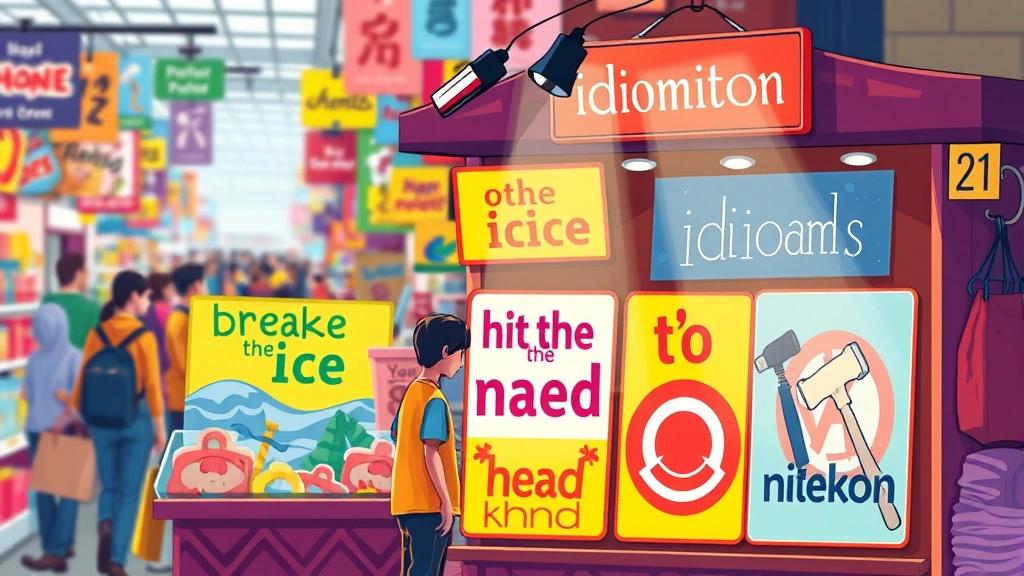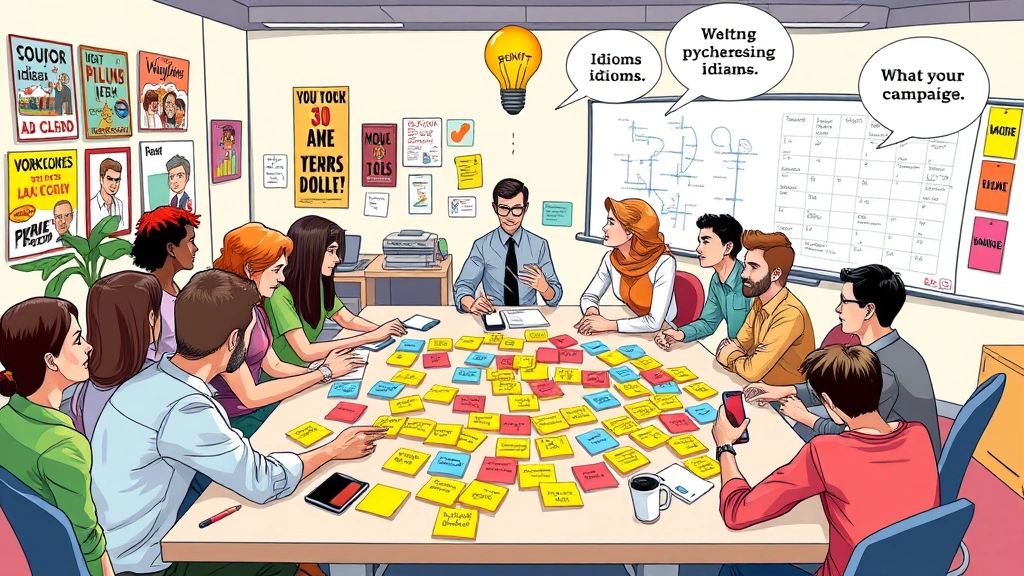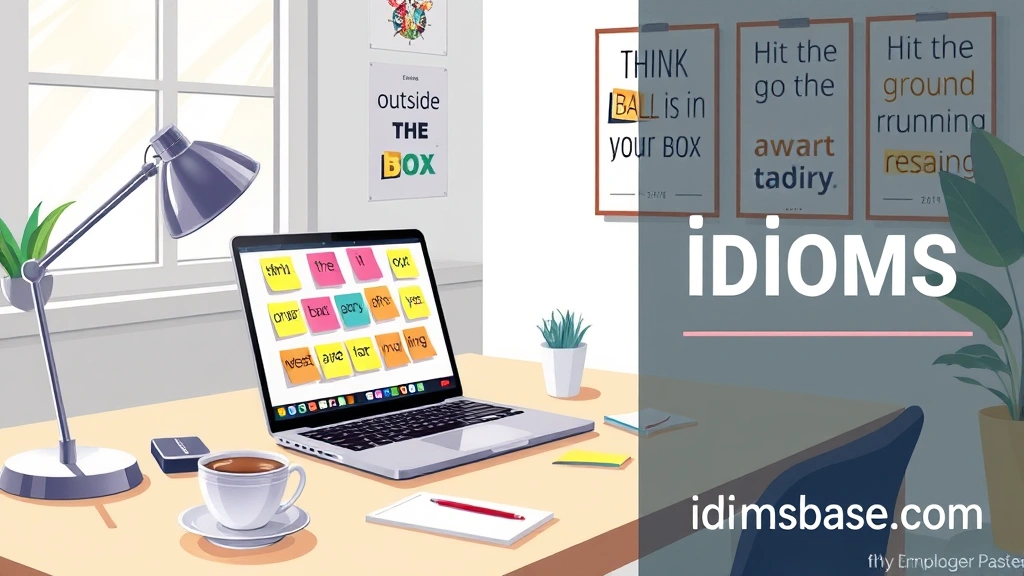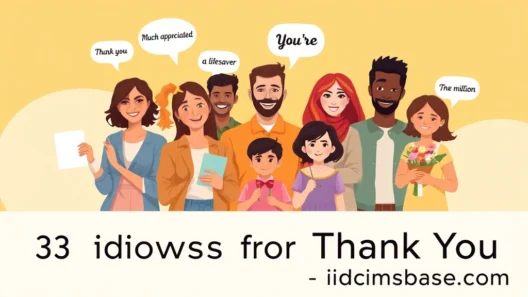Ever feel like your advertising messages are just… snooze-worthy? Like they’re blending into the background noise, instead of popping out and grabbing attention? You’re not alone! In today's crowded marketplace, standing out is tougher than ever. But what if I told you there’s a secret weapon, a little linguistic magic that can make your ads more memorable, persuasive, and even fun?
We’re talking about idioms, my friend! These quirky phrases, rich with cultural nuance and vivid imagery, can be pure gold for marketers. They add a layer of familiarity, wit, and relatability that plain language often misses. Think about it: when you use an idiom, you're not just conveying a message; you're tapping into a shared understanding, a collective imagination. It’s like a secret handshake with your audience! So, buckle up, because we’re about to dive into the wonderful world of idioms and discover how they can supercharge your advertising efforts.
Why Idioms are Your Advertising BFFs
Before we jump into specific examples, let’s quickly chat about why idioms are so powerful in advertising. It’s not just about sounding clever; there’s some serious psychology at play here!
They Grab Attention
Idioms often use unexpected comparisons or imagery. This novelty makes people pause, think, and pay attention. It’s a pattern interrupt in a world full of predictable ad copy.
They Build Connection and Trust
When you use an idiom that resonates with your audience, it shows you "get" them. It’s a subtle nod to shared cultural understanding, which builds rapport and trust. People are more likely to buy from brands they feel connected to.
They Boost Memorability
Because idioms are often pictorial and evocative, they stick in people’s minds. A memorable ad is an effective ad, plain and simple.
They Simplify Complex Ideas
Sometimes, a single idiom can convey a complex idea or emotion more effectively than several sentences of literal explanation. They’re linguistic shortcuts!
They Add Personality and Tone
Want your brand to sound witty, relatable, serious, or playful? Idioms can help you achieve that distinct voice, adding a layer of personality to your brand’s communication.
Top Idioms for Advertising and How to Use Them
Ready to sprinkle some idiomatic magic into your campaigns? Here are some fantastic idioms that can be incredibly effective in advertising, along with ideas on how to wield them like a pro.
1. "Bite the Bullet"
Meaning: To face a difficult or unpleasant situation with courage and fortitude.
Advertising Angle: This idiom is perfect for products or services that help people overcome challenges, make tough decisions easier, or deal with something they’ve been putting off.
Example Use:
- For a financial planning service: "Tired of worrying about retirement? It's time to bite the bullet and secure your future with our expert financial planning."
- For a home repair service: "That leaky faucet won't fix itself. Don't just live with it, bite the bullet and call us for a quick, reliable repair!"
2. "Break the Bank"
Meaning: To cost a very large amount of money; to be very expensive.
Advertising Angle: Ideal for promoting affordable products or services, especially those that offer great value without compromising quality. It reassures customers that they won't have to spend a fortune.

Example Use:
- For an affordable car brand: "Quality doesn't have to break the bank. Discover our range of reliable cars designed for your budget."
- For a budget travel agency: "Dream vacation without having to break the bank? We make it possible! Explore our unbeatable travel deals."
3. "Cut Corners"
Meaning: To do something in the easiest, quickest, or cheapest way, often by sacrificing quality or standards.
Advertising Angle: This idiom is brilliant for highlighting a commitment to quality, thoroughness, and integrity. It reassures customers that your product or service is built to last and won't disappoint.
Example Use:
- For a construction company: "When it comes to your home, we never cut corners. Our craftsmanship stands the test of time."
- For a premium ingredient food brand: "We believe in taste, not shortcuts. That's why we never cut corners on our ingredients."
4. "The Ball is in Your Court"
Meaning: It is your turn to take action or make a decision.
Advertising Angle: This is a fantastic call-to-action idiom. It empowers the customer, puts them in control, and encourages them to take the next step.
Example Use:
- For an online course platform: "You've seen the potential. Now, the ball is in your court – enroll today and transform your career!"
- For a real estate agent: "Found your dream home? The ball is in your court to make an offer. Let's talk!"
5. "Hit the Nail on the Head"
Meaning: To describe exactly what is causing a situation or problem; to be precisely correct.
Advertising Angle: Perfect for products or services that provide accurate solutions, insightful analysis, or perfectly meet a specific need. It conveys precision and effectiveness.
Example Use:
- For a diagnostic software: "Our AI-powered tool truly hits the nail on the head, identifying system issues before they become major problems."
- For a consulting firm: "Struggling with market strategy? Our experts will hit the nail on the head with a tailored plan for your success."
6. "On Cloud Nine"

Meaning: Extremely happy; ecstatic.
Advertising Angle: Use this idiom to evoke feelings of joy, satisfaction, and ultimate happiness that your product or service can deliver. It’s great for luxury goods, travel, or anything that promises pure delight.
Example Use:
- For a luxury resort: "Escape to paradise and feel like you're on cloud nine with our unparalleled amenities and breathtaking views."
- For a delicious dessert brand: "One bite, and you'll be on cloud nine! Indulge in our new line of gourmet chocolates."
7. "Once in a Blue Moon"
Meaning: Very rarely.
Advertising Angle: This idiom is excellent for emphasizing exclusivity, rarity, or a limited-time offer. It creates a sense of urgency and highlights a unique opportunity.
Example Use:
- For a limited edition product: "This offer comes around only once in a blue moon. Don't miss your chance to own a piece of history!"
- For a special event: "A night of magic like this happens only once in a blue moon. Get your tickets before they're gone!"
8. "The Best of Both Worlds"
Meaning: To enjoy the advantages of two very different things at the same time.
Advertising Angle: Ideal for products or services that combine two desirable features or benefits that usually don't go together. It highlights versatility and comprehensive value.
Example Use:
- For a hybrid car: "Experience the best of both worlds – eco-friendly efficiency and powerful performance – with our new hybrid model."
- For a remote work solution: "Achieve work-life balance and productivity. Our platform offers the best of both worlds for modern teams."
9. "Under the Weather"
Meaning: Slightly unwell or ill.
Advertising Angle: This idiom is perfect for health-related products, remedies, or wellness services. It creates empathy and positions your solution as a way to feel better.

Example Use:
- For a cold and flu remedy: "Feeling a bit under the weather? Our fast-acting formula will have you back on your feet in no time."
- For a health supplement: "Don't let feeling under the weather slow you down. Boost your immunity with our natural supplements."
10. "Worth Its Weight in Gold"
Meaning: Extremely valuable or useful.
Advertising Angle: This idiom is fantastic for emphasizing the high value, quality, or indispensable nature of your product or service. It suggests an excellent return on investment.
Example Use:
- For a robust software solution: "Our new project management tool is truly worth its weight in gold for any growing business."
- For an educational program: "Investing in this course is like finding a treasure; the knowledge you gain will be worth its weight in gold."
Table: Idiom-Driven Ad Slogans & Their Impact
Let's see how these idioms can be woven into catchy slogans and the psychological impact they can have.
| Idiom Used | Example Ad Slogan | Target Audience Benefit/Impact |
|---|---|---|
| Bite the Bullet | "Stop Procrastinating. Bite the Bullet on Your Taxes Today!" | Encourages decisive action, positions service as solution to unpleasant task. |
| Break the Bank | "Luxury Travel That Won't Break the Bank!" | Reassures budget-conscious travelers, highlights affordability. |
| Cut Corners | "Quality Craftsmanship: We Never Cut Corners." | Builds trust, emphasizes dedication to high standards and durability. |
| The Ball is in Your Court | "Your Future Awaits. The Ball is in Your Court!" | Empowers the customer, prompts immediate action, creates a sense of agency. |
| Hit the Nail on the Head | "Precise Solutions That Always Hit the Nail on the Head." | Conveys accuracy and effectiveness, instills confidence in problem-solving ability. |
| On Cloud Nine | "Experience Pure Bliss: You'll Be On Cloud Nine!" | Evokes strong positive emotions, promises ultimate satisfaction and joy. |
| Once in a Blue Moon | "A Deal Like This Happens Once in a Blue Moon!" | Creates urgency and exclusivity, highlights a rare and valuable opportunity. |
| The Best of Both Worlds | "Power & Efficiency: Get The Best of Both Worlds!" | Highlights unique combination of benefits, appeals to desire for comprehensive value. |
| Under the Weather | "Feeling Under the Weather? Find Your Relief Here!" | Shows empathy, positions product as a comforting and effective remedy. |
| Worth Its Weight in Gold | "This Investment is Truly Worth Its Weight in Gold." | Emphasizes immense value and return on investment, creates perception of high worth. |
Navigating the Nuances: Tips for Using Idioms Effectively
While idioms are powerful, they're not a "one size fits all" solution. Here are some pro tips to ensure your idiomatic adventures in advertising are a smashing success:
Know Your Audience
This is paramount! Idioms are deeply cultural. An idiom that resonates beautifully in one region might be completely unknown or, worse, misunderstood in another. Do your homework. If you’re targeting a global audience, stick to more universally understood idioms or those common in English-speaking markets.
Keep it Concise
Idioms are meant to be punchy. Don’t overexplain them or bury them in long sentences. Let them shine!
Don't Overdo It
A little goes a long way. Using too many idioms can make your copy sound forced, unnatural, or even confusing. Choose one or two powerful ones per ad or campaign.
Ensure Relevance
The idiom must fit the context of your product, service, and message. Don't use an idiom just for the sake of it. It should genuinely enhance your message.
Test and Iterate
As with any advertising strategy, test your idiom-infused copy. See how your audience responds. A/B test different idioms or different ways of integrating them.
Key Takeaways
- Idioms are powerful linguistic tools that can make your advertising more engaging, memorable, and persuasive.
- They work by grabbing attention, building connection, boosting memorability, simplifying ideas, and adding brand personality.
- Choose idioms wisely, ensuring they resonate with your target audience and align perfectly with your brand message.
- Don't overuse them, and always prioritize clarity and relevance.
- Test your idiom-infused campaigns to see what truly connects with your audience.
FAQ: Your Burning Questions About Idioms in Advertising Answered
Q1: What is an idiom?
A: An idiom is a phrase or expression whose meaning cannot be understood from the ordinary meanings of its words. For example, "kick the bucket" doesn't mean to literally kick a bucket; it means to die. They are often figurative and culturally specific.
Q2: Why should I use idioms in my advertising?
A: Idioms can make your ads more captivating and relatable. They add a layer of wit, familiarity, and cultural nuance that plain language often lacks. They help your message stand out, connect with your audience on an emotional level, and make your brand more memorable.
Q3: Are idioms suitable for all types of advertising?
A: While powerful, idioms aren't always a perfect fit. They work best when your brand has a friendly, approachable, or witty tone. For very formal, serious, or highly technical industries (e.g., medical device manufacturing, academic research), a more direct and literal approach might be better to maintain credibility and clarity. Always consider your brand voice and target audience.
Q4: How do I know if an idiom is universally understood?
A: This is a tricky one! No idiom is truly "universal" across all languages and cultures. However, many idioms are widely understood within English-speaking countries (e.g., "break a leg," "piece of cake"). If your audience is global and diverse, it's safer to stick to idioms that are very common or to avoid them if there's any risk of misinterpretation. When in doubt, research its usage in your target markets or opt for clearer language.
Q5: Can using idioms make my advertising confusing?
A: Yes, absolutely, if used carelessly! If an idiom is unfamiliar to your audience, or if its meaning isn't clear from the context, it can definitely lead to confusion. This is why audience research and careful selection are crucial. Always ensure the idiom enhances clarity, not obscures it.
Q6: What's the difference between an idiom and a proverb?
A: A proverb is a short, well-known saying that expresses a general truth or piece of advice (e.g., "Actions speak louder than words," "When in Rome, do as the Romans do"). An idiom, on the other hand, is a phrase where the meaning is not deducible from the individual words (e.g., "spill the beans," "hit the road"). While both add color to language, proverbs offer wisdom, and idioms are more about figurative expression. Both can be used in advertising, but they serve slightly different purposes.
Q7: Should I use idioms in my brand's name or tagline?
A: While tempting, using idioms in brand names or taglines can be risky. If the idiom isn't widely understood or goes out of fashion, your brand identity could suffer. For taglines, a well-chosen idiom can be memorable, but ensure its meaning is crystal clear and timeless. For brand names, it's generally safer to opt for something more direct or abstract that won't be misunderstood.
Q8: How can I find more idioms to use in my advertising?
A: There are many resources! Online idiom dictionaries (like The Free Dictionary's Idioms section or Oxford Learner's Dictionaries) are great. You can also read widely in your target language, paying attention to common expressions in books, movies, and everyday conversations. Brainstorming with native speakers can also yield fantastic results!
So, there you have it! Idioms aren't just quirky phrases; they're dynamic tools that can inject personality, memorability, and persuasive power into your advertising. Now that you're armed with this knowledge, go forth and make your ads truly unforgettable. What's your favorite idiom, and how do you think it could be used in advertising? Share your thoughts in the comments below – let's keep the conversation going!






